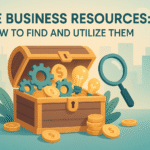How to Use Free eBooks and Templates to Build Your Email List
In the digital age, building an email list is more important than ever. Whether you’re a seasoned marketer or a small business owner, growing your email list can significantly boost your engagement and sales. One of the most effective strategies to achieve this is through offering free eBooks and templates. In this blog post, we’ll explore how you can leverage these resources to grow your email list, step by step.
Table of Contents
1. Introduction to Email List Building
2. Why Offer Free eBooks and Templates?
3. Creating Your Free eBook
4. Designing Engaging Templates
5. Promoting Your Free Resources
6. Optimizing for Search Engines
7. Conclusion
8. FAQs
1. Introduction to Email List Building 📧
Email list building is the process of collecting email addresses from visitors, readers, or potential customers. This list is invaluable because it allows you to connect directly with your audience, delivering personalized content and promotions straight to their inbox. But how do you entice people to join your list? The answer lies in offering something valuable in return.
2. Why Offer Free eBooks and Templates? 📚📝
Free eBooks and templates are excellent incentives for a few reasons. First, they provide immediate value to your audience, solving a problem or teaching them something new. Second, they establish your authority in your niche, building trust with your audience. Lastly, they are cost-effective to produce and distribute, making them an ideal tool for both large and small businesses.
3. Creating Your Free eBook ✍️
Creating a compelling eBook doesn’t have to be daunting. Start by identifying a topic that resonates with your audience. Consider conducting surveys or engaging with your community to discover their pain points and interests. Once you’ve chosen a topic, outline your eBook with clear, concise chapters that guide the reader from start to finish.
Writing an eBook is much like writing a series of blog posts. Keep your tone conversational and informative, and don’t shy away from adding personal anecdotes or experiences. This will make your eBook not only informative but also relatable and engaging.
4. Designing Engaging Templates 🎨
Templates are another fantastic resource to offer. They save your audience time and effort, whether they’re looking for a content calendar, a budget planner, or a presentation slide deck. To design an effective template, ensure it is user-friendly and visually appealing. Use tools like Canva or Adobe Spark to create professional-looking templates without needing graphic design expertise.
Remember to include clear instructions or tips on how to use the template effectively. This additional guidance can enhance the user experience, making your audience more likely to subscribe for more resources in the future.
5. Promoting Your Free Resources 📢
Once your eBook and templates are ready, it’s time to promote them. Use your website, social media channels, and email campaigns to spread the word. Create captivating landing pages with strong calls-to-action (CTA) to encourage visitors to sign up to your email list in exchange for the free resources.
Collaborate with influencers or partners within your industry to expand your reach. Guest blogging or participating in podcasts can also be effective in driving traffic to your offers.
6. Optimizing for Search Engines 🔍
SEO is crucial in maximizing the visibility of your free resources. Use keyword-rich titles and headers to ensure search engines can easily find and rank your content. Incorporate relevant keywords naturally throughout your landing pages and promotional content. Additionally, optimize images and include alt text to improve your SEO performance.
Remember, a well-optimized page not only attracts visitors but also compels them to take action, growing your email list effectively.
7. Conclusion 🚀
Building an email list doesn’t have to be a complex process. By offering free eBooks and templates, you provide value, establish authority, and foster trust with your audience. Follow these steps, and you’ll be well on your way to creating a thriving email list that supports your marketing goals.
8. FAQs ❓
Q: How long should my eBook be?
A: Your eBook should be long enough to cover the topic thoroughly, but concise enough to keep the reader engaged. Typically, 20-30 pages is a good length for a free eBook.
Q: What kind of templates are most effective?
A: The best templates are those that solve specific problems for your audience. Popular options include calendars, planners, checklists, and social media graphics.
Q: How can I measure the success of my eBook and template offers?
A: Track metrics such as the number of new subscribers, download rates, and engagement levels. Use tools like Google Analytics and email marketing software to gain insights into your campaign’s effectiveness.
By following these guidelines, you’ll be well-equipped to use free eBooks and templates as powerful tools in your email list-building strategy. Good luck, and happy list building! 🎉
Free Download!
Best Digital Product – eBooks, templates, AI tools, courses, and mor






